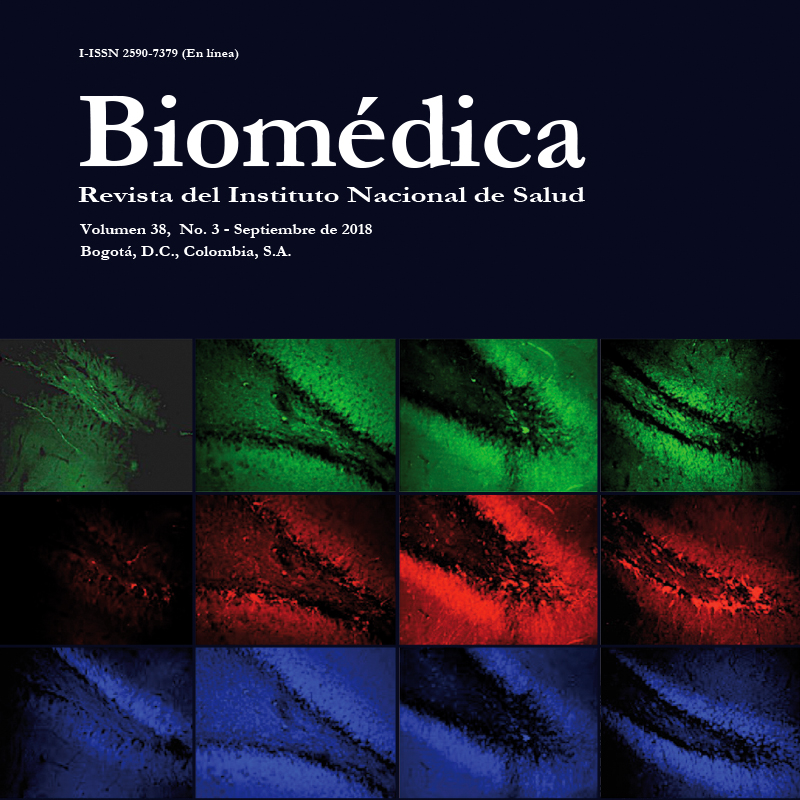Myoclonus induced by salbutamol: A case report
Abstract
Salbutamol is a β2 adrenergic agonist widely prescribed in patients with obstructive and restrictive lung diseases. The main side effects associated with its use are tachycardia and tremor. Myoclonus is an involuntary, irregular, abrupt, brief and sudden muscular contraction, which can be generalized, focal or multifocal.
We report the case of a 61-year-old patient presenting with myoclonus difficult to treat who showed improvement only after the definitive discontinuation of the β2 adrenergic agonist. We describe the clinical findings, the interventions, and the outcomes related to the onset of myoclonus secondary to the use of salbutamol, as well as the possible genesis and importance of this adverse effect. We used the CARE guidelines to delineate the clinical case.
Although myoclonus secondary to the use of different drugs has been described in the literature, as far as we know this is the fourth report of salbutamol-induced myoclonus to date.
Downloads
References
Palmer E. Top 20 generic molecules worldwide: Fierce Pharma. Fecha de consulta: 30 de enero de 2018. Disponible en: https://www.fiercepharma.com/special-report/top-
-generic-molecules-worldwide
Cazzola M, Page CP, Rogliani P, Matera MG. β2-agonist therapy in lung disease. Am J Respir Crit Care Med. 2013;187:690-6. https://doi.org/10.1164/rccm.201209-1739PP
Gagnier JJ, Kienle G, Altman DG, Moher D, Sox H, Riley D, et al. The CARE guidelines: Consensus-based clinical case reporting guideline development. BMJ Case Rep. 2013. https://doi.org/10.1136/bcr-2013-201554
Kojovic M, Cordivari C, Bhatia K. Myoclonic disorders: A practical approach for diagnosis and treatment. Ther Adv Neurol Disord. 2011;4:47-62. https://doi.org/10.1177/1756285610395653
Fahn S, Marsden CD, van Woert MH. Definition and classification of myoclonus. Adv Neurol. 1986;43:1-5.
Forman SA. Clinical and molecular pharmacology of etomidate. Anesthesiology. 2011;114:695-707. https://doi.org/10.1097/ALN.0b013e3181ff72b5
Jiménez-Jiménez FJ, Puertas I, de Toledo-Heras M. Drug-induced myoclonus: Frequency, mechanisms and management. CNS Drugs. 2004;18:93-104.
Brefel-Courbon C, Gardette V, Ory F, Montastruc JL. Drug-induced myoclonus: A French pharmacovigilance database study. Neurophysiol Clin. 2006;36:333-6. https://doi.org/10.1016/j.neucli.2006.12.003
Pierce DA, Holt SR, Reeves-Daniel A. A probable case of gabapentin-related reversible hearing loss in a patient with acute renal failure. Clin Ther. 2008;30:1681-4. https://doi.org/10.1016/j.clinthera.2008.09.004
Mícheli F, Cersósimo MG, Scorticati MC, Vélez M, González S. Myoclonus secondary to albuterol (salbutamol) instillation. Neurology. 2000;54:2022-3.
Holloway K, Green T, World Health Organization. Drug and therapeutics committees: A practical guide. Ginebra: Organización Mundial de la Salud; 2003. p. 146.
Naranjo CA, Busto U, Sellers EM, Sandor P, Ruiz I, Roberts EA, et al. A method for estimating the probability of adverse drug reactions. Clin Pharmacol Ther. 1981;30:239-45. https://doi.org/10.1038/clpt.1981.154
Levy A, Chen R. Myoclonus: Pathophysiology and treatment options. Curr Treat Options Neurol. 2016;18:21. https://doi.org/10.1007/s11940-016-0404-7
Toro C, Hallett M. Pathophysiology of myoclonic disorders. En: Movement disorders: Neurologic principles and practice. Tercera edición. Watts RL, Koller WC (editores) New York: McGraw-Hill; 2004.
Hagen N, Swanson R. Strychnine-like multifocal myoclonus and seizures in extremely high-dose opioid administration: Treatment strategies. J Pain Symptom Manage. 1997;14:51-8. https://doi.org/10.1016/S0885-3924(97)00001-8
Some similar items:
- Jorge Enrique Machado-Alba, Manuel José Londoño-Builes, Luis Felipe Echeverri-Cataño, Sergio Andrés Ochoa-Orozco, Adverse drug reactions in Colombian patients, 2007-2013: Analysis of population databases , Biomedica: Vol. 36 No. 1 (2016)
- Roxana De las Salas, Daniela Díaz-Agudelo, Adverse drug reactions in neonates hospitalized in neonatal intensive care units in Barranquilla, Colombia , Biomedica: Vol. 37 No. Sup.1 (2017): Suplemento 1, Alteraciones del sistema nervioso
- Carlos Andrés Badillo, Lizeth Katherine Barrera, Gerson Arias, Gabriel Fernando Tribiño, Oscar Andrés Gamboa, Julio César García, Ana María Granada, Incidence of antiretroviral drug-related problems in the treatment of HIV among hospitalized patients in the Hospital Santa Clara, Bogotá , Biomedica: Vol. 39 No. 3 (2019)
- Juan P. Gómez, Juan C. Quintana, Patricia Arbeláez, Jorge Fernández, Juan F. Silva, Jacqueline Barona, Juan C. Gutiérrez, Abel Díaz, Rafael Otero, Tityus asthenes scorpion stings: epidemiological, clinical and toxicological aspects , Biomedica: Vol. 30 No. 1 (2010)
- Omar Segura, Carlos Maldonado, Evaluation of medication side-effects from an economic perspective. , Biomedica: Vol. 23 No. 4 (2003)
- Alvaro Javier Idrovo, Possible health effects associated with Pre-Columbian metallurgy. , Biomedica: Vol. 25 No. 3 (2005)
- Jorge E. Machado-Alba, Luis Felipe Echeverri-Cataño, Manuel José Londoño-Builes, Paula Andrea Moreno-Gutiérrez, Sergio Andrés Ochoa-Orozco, Joaquín Octavio Ruiz-Villa, Social, cultural and economic factors associated with self-medication , Biomedica: Vol. 34 No. 4 (2014)
- Jefferson Antonio Buendia, Andrés F. Zuluaga, Physicians' insight about adverse drug reaction to frequently used medication groups in Bogotá (Colombia) , Biomedica: Vol. 34 No. 3 (2014)
- Lina Ruiz, María Angélica Maya, Zulma Vanesa Rueda, Lucelly López, Lázaro Agustín Vélez, Current characteristics of tuberculosis and human immunodeficiency virus co-infection in a cohort of hospitalized patients in Medellín, Colombia , Biomedica: Vol. 38 No. Sup. 2 (2018): Suplemento 2, Medicina tropical
- Manuel Enrique Machado-Duque , Jorge Enrique Machado-Alba, Andrés Gaviria-Mendoza, Luis Fernando Valladales-Restrepo , Ilsa Yadira Parrado-Fajardo , Mauren Ospina-Castellanos , Luisa Fernanda Rojas-Chavarro , John Alexander López-Rincón , Identification of medication errors through a monitoring and minimization program in outpatients in Colombia, 2018-2019 , Biomedica: Vol. 41 No. 1 (2021)

| Article metrics | |
|---|---|
| Abstract views | |
| Galley vies | |
| PDF Views | |
| HTML views | |
| Other views | |

























